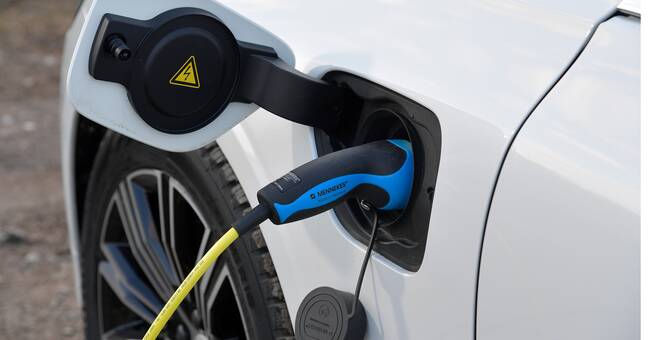A year ago, we received tips from company car owners who had thoughts about how climate-friendly the new large charging hybrid models really are, as they consume quite a lot of petrol when the battery runs out after a few miles of driving.
The purpose of the climate bonus system is to control car purchases so that the cars on Swedish roads have as little climate impact as possible.
And research shows that larger, heavier cars are worse for the climate than lighter ones, even if they are fully or partially powered by electricity.
But the company car market has historically been crucial for Swedish car manufacturers, and the tax rules have previously been designed to make it easier for the Swedish car industry and Swedish jobs.
We decided to examine how the regulation went this time, and whether the relatively costly bonuses really lead to cars with as little climate impact as possible.
The government eased the requirements
A survey we conducted among large companies showed that many large companies have begun to introduce climate criteria in their company car policies.
Pretty soon we realized that the limits for climate bonuses seemed to have been set so that Volvo's plug-in hybrids, including the SUVs, barely qualified.
But we were also told that the EU's new WLTP measurement system, with more realistic values, would soon take effect.
As a result, several of Volvo's models would still not be able to meet the emission limit and thus leave the bonus system.
The rules would automatically stop benefiting Volvo.
But in connection with the autumn budget last year, something unexpected happened.
The government eased the requirements and raised the limit for climate bonuses.
We then began a systematic survey of all cars that received climate bonuses in Sweden since the system was introduced on 1 July 2018. From the Swedish Transport Agency, we requested information on CO2 emissions from all climate bonus cars, according to the old measurement method and according to the new, service weight and horsepower for each driveline ( fossil / battery).
List of eleven car models
We created a database of data from the Swedish Transport Agency with all 51,700 cars that then received climate bonuses, and registration statistics from the industry organization Bil Sweden, processed it and produced a list of car models that emitted over 60 grams of carbon dioxide per kilometer, but a maximum of 70 grams, according to the new measurement method WLTP.
It was thus these models that were saved as climate bonus cars, and thus became subsidized for private car buyers, and eligible as company cars by many employers.
The list we received contained eleven car models.
Seven of them were Volvo models, including the largest SUV models, with just over 300 horsepower petrol engine.
The government still defended the rule change when it was published in January, with reference to jobs in Sweden, and that it is better for people to buy large plug-in hybrid SUVs than large fossil cars.
Increase in climate bonus cars
We knew that the climate bonus rules would be negotiated once again before this year's autumn budget, and now we wanted to investigate how the outcome has been since the new rules came into force at the turn of the year.
We then requested from the Swedish Transport Agency the information on all climate bonus cars sold since the previous review.
There were another 58,000 cars.
The processing of data showed showed that about 1,000 cars sold since the turn of the year had emissions between 61 and 70 g / km, and thus qualified as climate bonus cars thanks to the government easing emissions requirements.
About 900 cars, or nine out of ten, were Volvo cars, most of them SUVs.
The new processing in the database also showed that the proportion of climate bonus cars over two tonnes increased to 35 percent, from 26 percent in the same period last year.
On Monday, when the climate measures in this year's autumn budget were presented, it was clear that the government had backed down, changing the emission limit for the climate bonus from 70 grams of carbon dioxide per kilometer to 60 grams.

